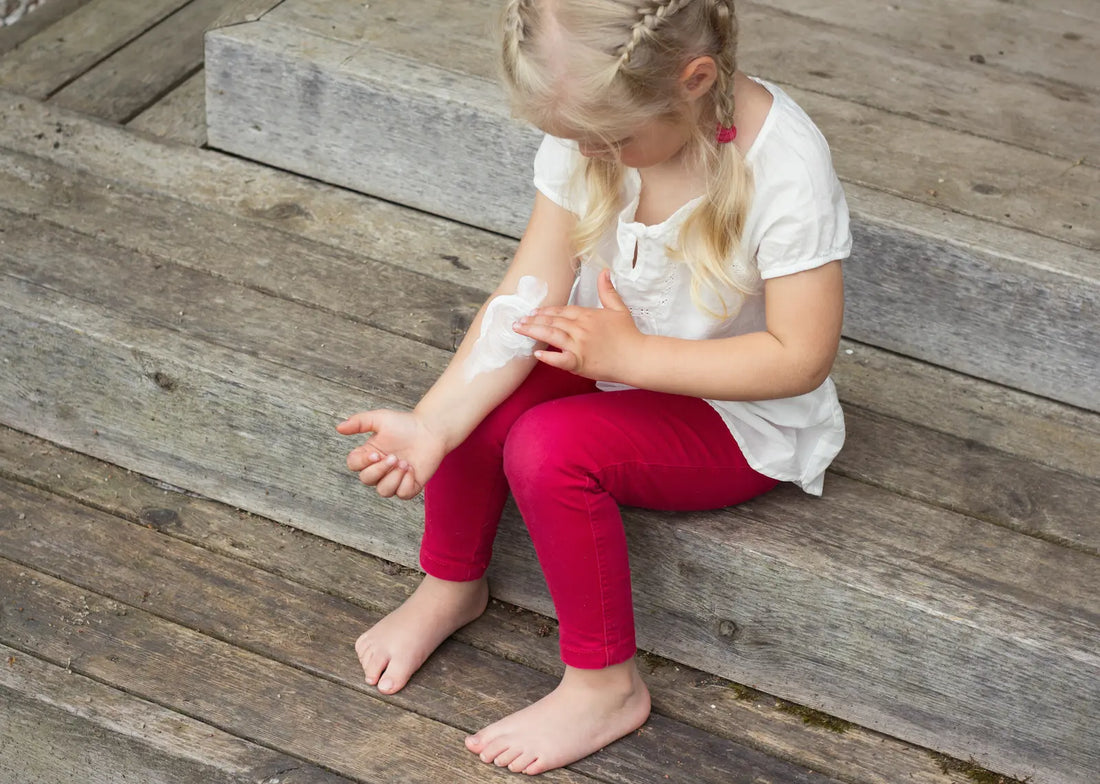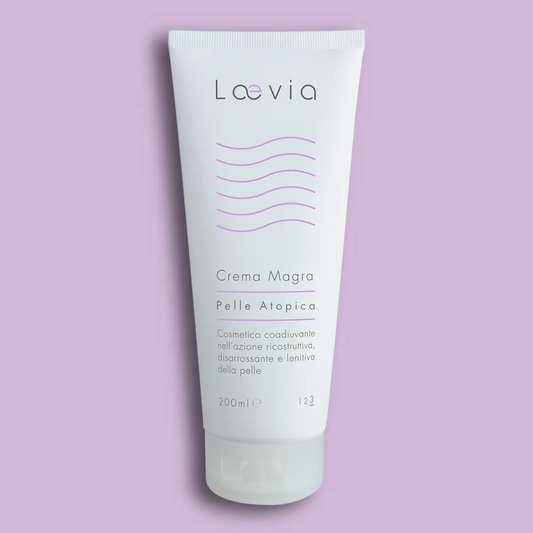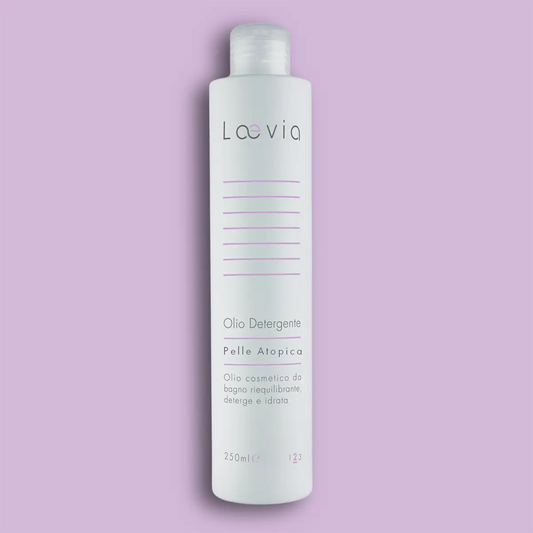Atopic Dermatitis is an inflammatory skin disease resulting from the alteration of the skin barrier. It is a non-contagious pathology, rarely allergic in nature, which affects genetically predisposed individuals. It has a chronic-relapsing course and alternates periods of worsening (flare-ups) with periods of improvement.
The progression of Atopic Dermatitis is very heterogeneous and depends on various factors. The duration, frequency and severity of exacerbations vary from subject to subject, even over the course of the subject's life.
It affects approximately 15% of the child population and can be divided into 3 groups based on age:
It has been estimated that 3% of atopic children will be atopic adults.
The hydrolipidic film, composed of fats, together with the stratum corneum perform a protective function from the outside, forming the so-called Skin Barrier.
When this is healthy it has the ability to retain the right amount of water and mineral salts, without dispersing excess, protecting us from the aggression of external agents.
The function it performs is similar to that performed by the walls of the house, which must be well cemented and have openings only where necessary.
The Skin Barrier of a person with Atopic Dermatitis is like the wall of a house that is unable to perform its role well: the mortar (fats) is missing between one brick and another (the cells) and holes have opened in the wall which create dangerous passageways between outside and inside.
This involves:
- Excessive loss of water and mineral salts resulting in dryness.
- Greater ease of entry for irritating external agents resulting in inflammation, redness and itching.
Atopic Dermatitis can have three degrees of severity (SCORAD international index):
- Mild Atopic Dermatitis
- Moderate Atopic Dermatitis
- Severe Atopic Dermatitis

There is no definitive and definitive cure for Atopic Dermatitis: healing only occurs spontaneously and is not a given.
The ideal objective of any treatment against Atopic Dermatitis is to keep the patient at the lowest step of the SCORAD index for as long as possible and to ensure that the acute phases are less marked.
To achieve this result, daily treatment is necessary at any age and in any stage of the disease.
As mentioned, the skin of the atopic is unable to perform its barrier function well. It is therefore necessary to rehydrate the epidermis, cleanse without further weakening the hydrolipidic film and "re-cement" the skin from the outside with emollient creams that make it more hydrated and resistant, calming redness and the sensation of itching.
The skin of the subject with Atopic Dermatitis, however, never stops being atopic, even in periods of well-being: it is still dry and hyper-reactive skin; for this reason the treatment with delicate detergents and specific emollient creams must be constant and daily. Only in this way is it possible:
- Reduce the severity of symptoms by lengthening the period of well-being between one flare-up and another,
- Reduce the intensity of flare-ups,
- Reduce the need to resort to the use of drugs.
Thanks to the experience of Laevia experts and the collaboration with specialists in the dermatological and pediatric sectors, we have created a line of specific products for the cosmetic treatment of Atopic Dermatitis.
THE LAEVIA PATH IN THREE PHASES.
Phase 1: It is necessary to replenish the water that the damaged barrier was not able to retain, delicately cleanse and try to repair the skin by alleviating the sensation of itching and redness. You will need to rehydrate your skin with a 10-15 minute bath with Laevia Bath Salts, rich in Magnesium Chloride, Sodium Chloride, Allantonia and Urea. Take at least 2/3 baths a week.
Phase 2: Gently cleanse the skin to eliminate irritants, bacteria and allergens without weakening the hydrolipidic film that protects the skin with Shower Gel or Laevia Cleansing Oil. Use for every bath or shower.
Phase 3: Restore the barrier effect of the skin using Laevia Fatty Cream or Lean Cream, rich in Ceramide3, Hyaluronic Acid, Vitamin E, Vegetable Glycerin and Panthenol, calming at the same time the redness and itching sensation thanks to Glycyrrhetinic Acid , Bisabolo and Grapeseed Oil. Repeat the application even 2/3 times a day.
Which cream to use?
The fast-absorbing Laevia Lean Cream for Atopic Dermatitis is indicated for hot periods. Laevia Fat Cream for Atopic Dermatitis, richer and more nourishing, is indicated for cold periods.
How much cream to use?
The right amount of cream to use for each application consists of the Finger Tip Unit: to cover a surface as large as the palm of a hand, apply the amount of cream that can fit on the first phalanx of the index finger of the palm of the same hand.





